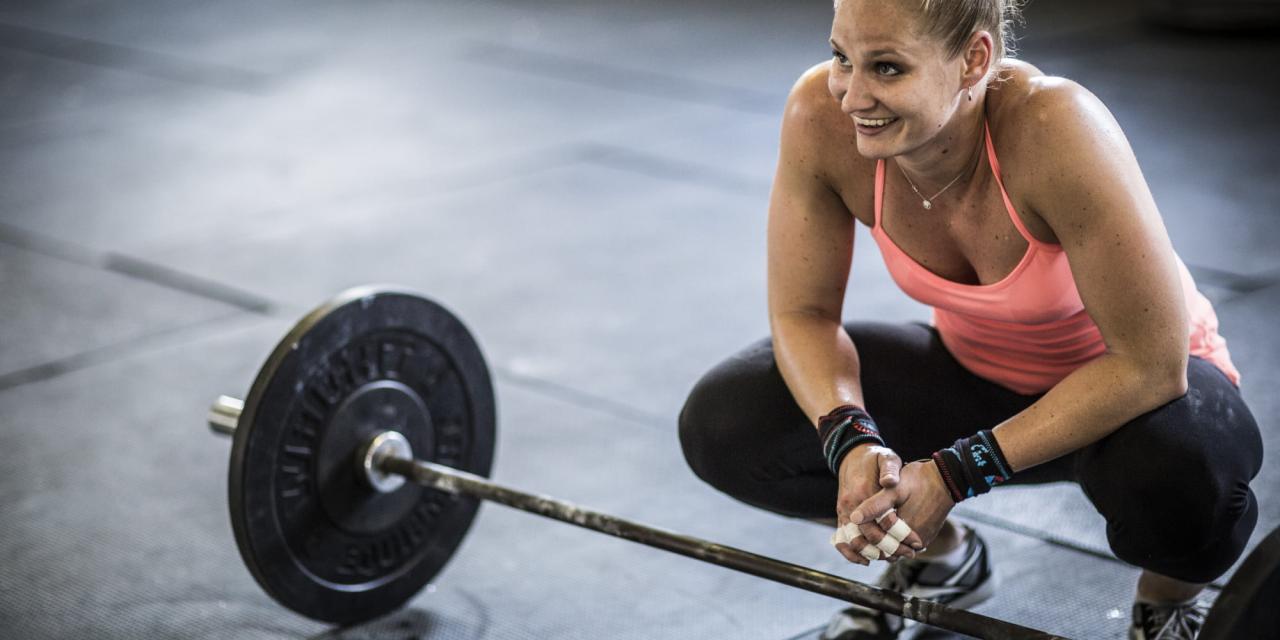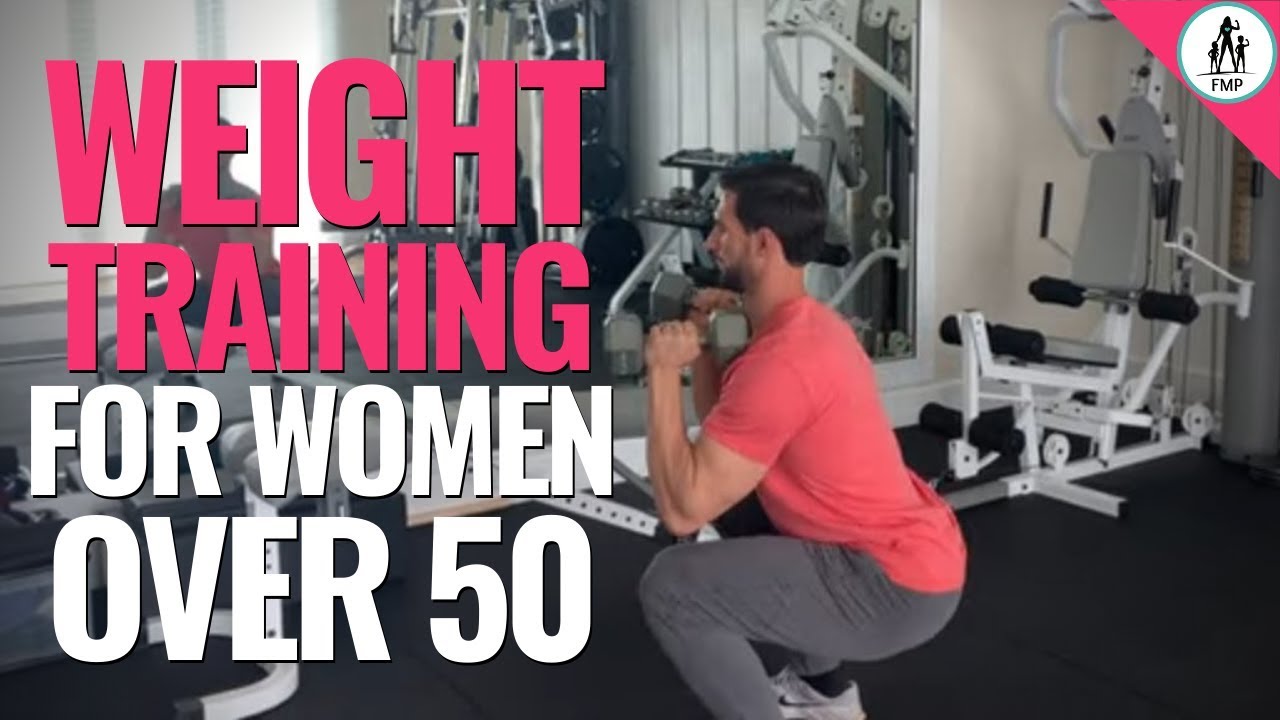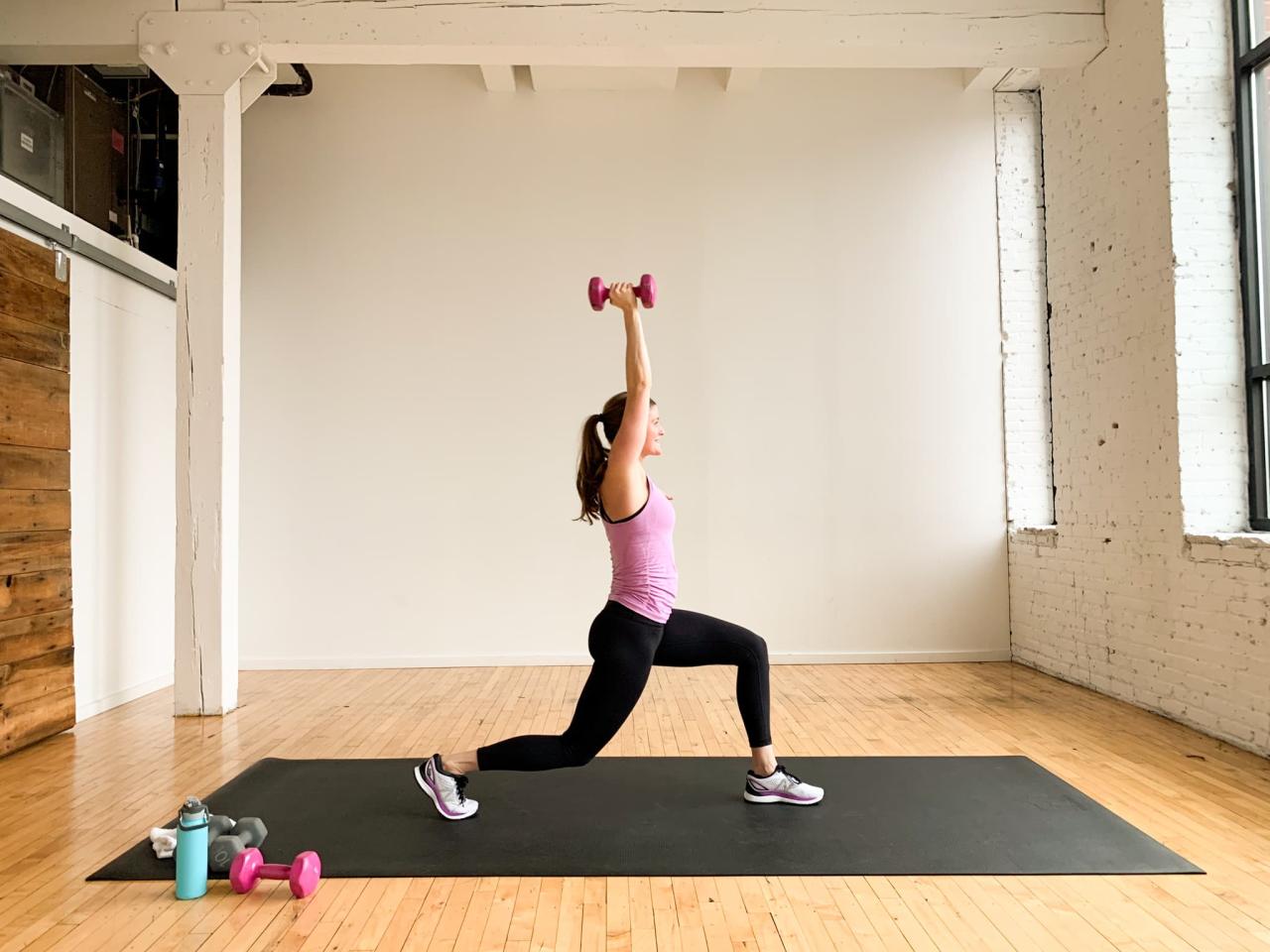A comprehensive strength training program for women to increase muscle strength and endurance isn’t just about getting bigger biceps (though, hey, those are nice too!). It’s about unlocking inner superhero strength, feeling ridiculously confident, and defying gravity with newfound power. This program isn’t about transforming into a bodybuilder overnight; it’s about empowering women to sculpt stronger, healthier bodies, one perfectly executed squat at a time.
Think of it as a journey of self-discovery, fueled by protein shakes and punctuated by triumphant “I lifted that!” moments. Get ready to unleash your inner Amazon.
We’ll delve into a 12-week program meticulously designed to target major muscle groups, using a blend of compound and isolation exercises. We’ll cover everything from proper form (no more wobbly squats!) to nutrition strategies that will fuel your gains. We’ll even tackle those pesky plateaus and help you stay motivated, because let’s face it, conquering your fitness goals is way more fun than staring at a dusty dumbbell.
Introduction: Comprehensive Strength Training Program For Women To Increase Muscle Strength And Endurance

Let’s ditch the dusty old weightlifting stereotypes and dive into a strength training program designed to empower women! This isn’t about bulking up like a bodybuilder (unless that’s your jam, then go for it!). It’s about building a stronger, healthier, and more resilient you – inside and out. We’re talking about a comprehensive approach that targets muscle strength and endurance, specifically tailored to the unique physiological needs of women.A comprehensive strength training program for women focuses on building functional strength – the kind that makes everyday life easier, from carrying groceries to chasing after toddlers (or mischievous cats!).
Want a comprehensive strength training program for women to boost muscle power and stamina? Forget dainty exercises; we’re talking serious gains! If you’re looking for a killer weightlifting plan to get you there, check out this Top rated weight lifting program for building strength and muscle for some serious inspiration. Then, tailor it to your needs for a program that’ll have you bench-pressing kittens (metaphorically, of course!).
Remember, a strong woman is a happy woman – and a woman who can lift heavy things!
It involves a balanced approach to exercises that target all major muscle groups, incorporating various training methods to maximize results while minimizing injury risk. The focus is on progressive overload – gradually increasing the weight, reps, or sets over time to continually challenge your muscles and promote growth.
Want a comprehensive strength training program for women to boost muscle strength and endurance? Think sculpted arms and a superhero-level squat! But let’s be real, building muscle also helps torch those extra calories. Check out this awesome guide on How to lose weight with strength training and a healthy diet to learn how to maximize your results.
Then, get back to those gains – you’ll be lifting heavier than you ever thought possible!
Benefits of Strength Training for Women
Strength training isn’t just for the guys. In fact, it offers a plethora of benefits specifically for women. Beyond the obvious aesthetic improvements (toned muscles, anyone?), the real magic lies in the significant gains in muscle strength and endurance. This translates to improved bone density, crucial for preventing osteoporosis later in life. It also boosts metabolism, helping with weight management, and enhances overall physical function, making everyday activities feel easier and more manageable.
Increased strength means reduced risk of injuries from falls and other everyday mishaps. Furthermore, studies show strength training can even improve mood and reduce symptoms of anxiety and depression.
Key Differences Between Men’s and Women’s Strength Training Programs
While the fundamental principles of strength training remain the same for both men and women, there are key differences to consider. Women generally have a higher percentage of body fat and lower levels of testosterone compared to men. This means that women may build muscle at a slightly slower rate and might need to adjust their training programs accordingly.
Want a comprehensive strength training program for women to boost muscle strength and endurance? You’ll need a solid foundation of killer exercises, and that’s where knowing the best muscular strength exercises comes in. Mastering these will supercharge your overall program, helping you sculpt those amazing muscles and conquer any fitness challenge. So ditch the donuts and embrace the gains!
For example, a women’s program might emphasize higher repetitions with lighter weights to promote muscular endurance, while men’s programs often incorporate heavier weights and lower reps for maximal strength gains. However, this isn’t a hard and fast rule. Individual needs and goals always dictate the optimal training approach. Hormonal variations throughout a woman’s menstrual cycle can also impact training, necessitating adjustments in intensity and volume.
Finally, programs should also consider the potential impact of pregnancy and postpartum recovery on training.
Program Design
Let’s get down to the nitty-gritty: building a strength training program that’ll make you feel like a superhero (minus the cape, unless you want one). We’re focusing on a 12-week plan, a perfect blend of compound movements (big, multi-joint exercises that work multiple muscle groups simultaneously – think full-body awesomeness) and isolation exercises (focusing on individual muscles for that extra sculpting touch).
Want a comprehensive strength training program for women to increase muscle strength and endurance? It’s all about building a solid foundation, and that starts with mastering the basics. For some killer moves to get you started, check out this fantastic resource on Best weight training exercises for women to build strength and tone – then integrate them into a well-rounded program for maximum gains! Remember consistency is key for building that enviable strength and endurance.
Think of it as a symphony of strength, not just a random workout playlist.This program emphasizes progressive overload – the key to continuous gains. We’ll be gradually increasing the weight, reps, or sets over time to challenge your muscles and force them to adapt and grow stronger. It’s like a friendly competition between you and your muscles, and you’re going to win!
Exercise Selection and Progression
Here’s a sample 12-week program. Remember, always consult your doctor or a qualified fitness professional before starting any new workout routine. This is just a template; adjust it based on your individual needs and capabilities. Remember, listening to your body is paramount.
| Week | Exercise | Sets | Reps |
|---|---|---|---|
| 1-4 | Squats | 3 | 8-12 |
| 1-4 | Bench Press | 3 | 8-12 |
| 1-4 | Rows | 3 | 8-12 |
| 1-4 | Overhead Press | 3 | 8-12 |
| 1-4 | Bicep Curls | 3 | 10-15 |
| 1-4 | Triceps Extensions | 3 | 10-15 |
| 5-8 | Squats | 3 | 6-10 |
| 5-8 | Bench Press | 3 | 6-10 |
| 5-8 | Rows | 3 | 6-10 |
| 5-8 | Overhead Press | 3 | 6-10 |
| 5-8 | Bicep Curls | 3 | 12-15 |
| 5-8 | Triceps Extensions | 3 | 12-15 |
| 9-12 | Squats | 4 | 4-8 |
| 9-12 | Bench Press | 4 | 4-8 |
| 9-12 | Rows | 4 | 4-8 |
| 9-12 | Overhead Press | 4 | 4-8 |
| 9-12 | Bicep Curls | 3 | 15-20 |
| 9-12 | Triceps Extensions | 3 | 15-20 |
Progressive Overload
Progressive overload is the secret sauce to continuous muscle growth and strength gains. It simply means consistently challenging your muscles by gradually increasing the demands placed upon them. This can be achieved by increasing the weight lifted, the number of repetitions performed, the number of sets completed, or decreasing the rest time between sets. For example, if you can comfortably do 10 reps of squats with a certain weight, next week try to increase the weight slightly, or aim for 12 reps with the same weight.
Want a comprehensive strength training program for women to boost muscle strength and endurance? You’ll need a solid foundation of killer exercises, and that’s where knowing the best muscular strength exercises comes in. Mastering these will supercharge your overall program, helping you sculpt those amazing muscles and conquer any fitness challenge. So ditch the donuts and embrace the gains!
Think of it as a slow and steady climb up a mountain – consistent progress is key.
Proper Form and Technique
Proper form is not just about looking good; it’s crucial for preventing injuries and maximizing results. Think of it as building a house – a shaky foundation leads to a wobbly structure. Poor form compromises your results and puts you at risk of injury.
Here are some common form errors to avoid:
- Arching your back during squats or deadlifts: This puts excessive strain on your spine.
- Using momentum instead of controlled movements: This reduces the effectiveness of the exercise and increases injury risk.
- Rounding your shoulders during bench press or rows: This can lead to shoulder impingement.
- Locking your knees or elbows: This can put stress on your joints.
- Using improper grip: This can lead to strains and reduced effectiveness.
Exercise Selection

Let’s get down to the nitty-gritty: choosing the right exercises to sculpt your amazing physique! We’re not just talking about any old moves; we’re talking about exercises that’ll make you feel like a superheroine, capable of lifting cars (well, maybe not cars, but definitely impressive amounts of weight!). This section will focus on compound exercises – the big guns that work multiple muscle groups simultaneously – followed by isolation exercises to really hone in on specific areas.
Think of it as a full-body makeover for your muscles.
Compound Exercises Targeting Major Muscle Groups
The following table Artikels five fantastic compound exercises that will form the bedrock of your strength-building journey. Remember, proper form is key – so start light, focus on technique, and gradually increase the weight as you get stronger. Think slow and controlled movements; we’re building muscle, not just lifting weights.
| Exercise | Muscle Group | Equipment | Description |
|---|---|---|---|
| Squats | Legs (quadriceps, hamstrings, glutes) | Barbell, dumbbells, bodyweight | Stand with feet shoulder-width apart, lower your hips as if sitting in a chair, keeping your back straight and chest up. Push through your heels to return to standing. |
| Deadlifts | Back (erector spinae), legs (hamstrings, glutes) | Barbell, dumbbells | Stand with feet hip-width apart, hinge at your hips, keeping your back straight, and lower the weight towards the ground. Engage your glutes and hamstrings to lift the weight back up. |
| Bench Press | Chest (pectorals), shoulders (anterior deltoids), triceps | Barbell, dumbbells | Lie on a bench with feet flat on the floor. Lower the weight to your chest, keeping your elbows slightly bent, and then press it back up. |
| Overhead Press | Shoulders (deltoids), triceps | Barbell, dumbbells | Stand with feet shoulder-width apart, holding the weight at shoulder height. Press the weight overhead, keeping your core engaged and elbows slightly bent. |
| Bent-Over Rows | Back (latissimus dorsi, rhomboids, trapezius), biceps | Barbell, dumbbells | Bend at the hips, keeping your back straight, and lower the weight towards the ground. Pull the weight towards your chest, squeezing your shoulder blades together. |
Isolation Exercises for Enhanced Muscle Development
Now that we’ve covered the heavy hitters, let’s talk about isolation exercises. These exercises target individual muscles, allowing for more focused growth and sculpting. Think of them as the finishing touches on your masterpiece.
Here are some examples:
- Legs: Leg extensions (quadriceps), hamstring curls (hamstrings), glute bridges (glutes)
- Back: Lat pulldowns (latissimus dorsi), face pulls (rear deltoids, rotator cuff), seated rows (rhomboids)
- Chest: Pec flyes (pectorals), cable crossovers (pectorals)
- Shoulders: Lateral raises (lateral deltoids), front raises (anterior deltoids), reverse flyes (rear deltoids)
- Arms: Bicep curls (biceps), triceps extensions (triceps), hammer curls (biceps and forearms)
Exercise Variations and Their Benefits
There’s more than one way to skin a cat… or, in this case, build muscle! Different variations of exercises can target muscles from slightly different angles, allowing for more comprehensive development and preventing plateaus.
Let’s look at a few examples:
- Squats: Goblet squats (holding a dumbbell close to your chest) emphasize core stability; front squats (barbell across the front of your shoulders) target the quads more intensely; sumo squats (feet wider than shoulder-width apart) engage the inner thighs and glutes more.
- Bench Press: Incline bench press targets the upper chest; decline bench press focuses on the lower chest; close-grip bench press emphasizes the triceps.
- Rows: Bent-over rows work the entire back; seated cable rows allow for more controlled movement; T-bar rows are great for building thickness in the back.
Nutrition and Recovery

Fueling your fitness journey isn’t just about lifting heavy; it’s about providing your body with the building blocks it needs to become a stronger, more resilient version of itself. Think of your muscles as a magnificent, ever-evolving construction site – you wouldn’t expect a skyscraper to rise without the right materials, would you? This section dives into the nutritional strategies and recovery methods that will help you maximize your strength training gains.
We’ll explore the importance of protein, the magic of sleep, and the surprisingly significant role of stress management in your overall progress.
Remember, your body is a finely tuned machine, and proper nutrition and recovery are the high-octane fuel that keeps it running smoothly. Neglecting these aspects is like trying to win a marathon on stale bread and lukewarm water – not ideal.
Sample Weekly Meal Plan
This sample meal plan provides a balanced approach to macronutrients to support muscle growth and recovery. Remember, individual needs vary, so adjust portion sizes based on your activity level and calorie requirements. Consulting a registered dietitian or nutritionist can help you personalize a plan further.
| Day | Meal | Food Items | Macronutrient Breakdown (Approximate) |
|---|---|---|---|
| Monday | Breakfast | Greek yogurt (1 cup) with berries (1/2 cup) and almonds (1/4 cup) | Protein: 25g, Carbs: 30g, Fat: 15g |
| Monday | Lunch | Chicken salad sandwich on whole-wheat bread with mixed greens | Protein: 35g, Carbs: 40g, Fat: 10g |
| Monday | Dinner | Salmon (4oz) with roasted vegetables (1 cup) and quinoa (1/2 cup) | Protein: 30g, Carbs: 45g, Fat: 20g |
| Tuesday | Breakfast | Oatmeal (1/2 cup) with protein powder (1 scoop) and banana (1) | Protein: 30g, Carbs: 50g, Fat: 5g |
| Tuesday | Lunch | Lentil soup (1.5 cups) with whole-grain bread | Protein: 20g, Carbs: 60g, Fat: 10g |
| Tuesday | Dinner | Lean ground beef stir-fry with brown rice | Protein: 40g, Carbs: 50g, Fat: 15g |
| Wednesday | Breakfast | Scrambled eggs (3) with spinach and whole-wheat toast | Protein: 20g, Carbs: 30g, Fat: 15g |
| Wednesday | Lunch | Turkey breast (4oz) with sweet potato (1 medium) and broccoli (1 cup) | Protein: 35g, Carbs: 40g, Fat: 5g |
| Wednesday | Dinner | Chicken breast (4oz) with brown rice and steamed green beans | Protein: 35g, Carbs: 45g, Fat: 10g |
Sufficient Protein Intake
Protein is the undisputed king of muscle building. It provides the amino acids your body uses to repair and rebuild muscle tissue after your workouts. Aim for a daily protein intake of around 1.6-2.2 grams per kilogram of body weight. This might sound like a lot, but it’s entirely achievable with a little planning.
Excellent sources of protein include:
- Lean meats: Chicken breast, turkey breast, lean beef
- Fish: Salmon, tuna, cod
- Eggs
- Dairy: Greek yogurt, cottage cheese
- Legumes: Lentils, chickpeas, beans
- Nuts and seeds
- Protein powders (whey, casein, soy, etc.)
The Trifecta of Recovery: Sleep, Hydration, and Stress Management, Comprehensive strength training program for women to increase muscle strength and endurance
While protein fuels muscle growth, sleep, hydration, and stress management are the unsung heroes of recovery. They work synergistically to optimize your body’s repair processes and prevent overtraining.
Want a comprehensive strength training program for women to boost muscle strength and endurance? Forget dainty dumbbells; we’re talking serious gains! A key component is mastering effective resistance training, and for that, check out this killer routine: Effective resistance training routine for building muscle at the gym. Then, integrate those moves into a well-rounded program designed specifically for women’s bodies – prepare for some seriously impressive results!
Sleep: Aim for 7-9 hours of quality sleep each night. During sleep, your body releases growth hormone, crucial for muscle repair and growth. Think of sleep as your body’s nightly muscle-building party.
Hydration: Water is essential for every bodily function, including nutrient transport and waste removal. Dehydration can impair muscle function and recovery. Keep a water bottle handy and sip throughout the day.
Stress Management: Chronic stress elevates cortisol levels, a hormone that can hinder muscle growth and increase muscle breakdown. Incorporate stress-reducing activities into your routine, such as yoga, meditation, or spending time in nature. Remember, a relaxed mind contributes to a stronger body.
Addressing Common Concerns

So, you’re ready to unleash your inner superheroine and sculpt a body that’s both strong and stunning? Fantastic! But before we dive headfirst into the iron paradise, let’s address some common concerns that might be lurking in the shadows, threatening to derail your gains. We’ll tackle potential injuries, offer modifications for diverse bodies, and provide strategies to conquer those pesky plateaus.
Think of this section as your personal safety net – a comfy, supportive net, not one of those flimsy circus nets that could send you tumbling.We want to ensure your strength training journey is as safe and effective as possible, maximizing results while minimizing risks. Remember, consistency and smart choices are key!
Common Strength Training Injuries and Prevention
Preventing injuries is far more fun than dealing with them. Think of it as proactive pampering for your body! Common injuries in strength training often stem from poor form, inadequate warm-ups, and pushing yourself too hard, too fast. Let’s tackle these head-on.
- Lower Back Pain: Often caused by improper lifting technique. Prevention involves maintaining a neutral spine, engaging your core, and using appropriate weight. Imagine your spine as a precious vase – you wouldn’t want to risk dropping it, would you?
- Knee Pain: Can result from improper knee alignment during squats or lunges. Prevention involves focusing on proper form, ensuring knees track over toes, and avoiding excessive weight. Think of your knees as your trusty steeds – treat them with respect!
- Shoulder Injuries: Often occur due to improper form during overhead presses or rows. Prevention includes maintaining proper posture, using controlled movements, and warming up thoroughly. Your shoulders are your powerhouses; protect them!
Exercise Modifications for Different Fitness Levels
Strength training is not a one-size-fits-all affair. It’s about finding what works best for YOUR unique body. Modifications are your secret weapon for making exercises accessible and effective regardless of your current fitness level or any physical limitations.
- Beginner Modifications: Reduce the weight, increase rest periods, and focus on mastering the correct form before increasing intensity. Think of it as building a strong foundation – rushing this stage could lead to wobbly results!
- Intermediate Modifications: Increase weight, reduce rest periods, and incorporate more challenging variations of exercises. This is where you start to really push your limits – in a safe and controlled manner, of course!
- Advanced Modifications: Explore advanced techniques like drop sets, supersets, and plyometrics. This is where you’re truly mastering the art of strength training – time to show off those sculpted muscles!
Overcoming Plateaus and Maintaining Motivation
Hitting a plateau? Don’t despair! It’s a common part of the strength training journey. Think of it as a temporary speed bump, not a roadblock.
- Vary Your Routine: Your muscles adapt quickly, so changing exercises, rep ranges, or sets keeps your body guessing and prevents stagnation. This is like switching up your workout playlist – keeps things fresh and exciting!
- Progressive Overload: Gradually increase the weight, reps, or sets over time. This continuous challenge ensures your muscles continue to grow stronger. It’s like climbing a mountain – one step at a time, always aiming higher!
- Prioritize Sleep and Nutrition: Adequate rest and proper nutrition are crucial for muscle recovery and growth. Think of them as the secret ingredients to your strength-building recipe – don’t skimp on them!
- Find a Workout Buddy: Having a supportive friend can make a world of difference in your motivation and consistency. Teamwork makes the dream work, and a workout buddy can provide accountability and encouragement!
Visual Aids
Let’s ditch the guesswork and get visual! Pictures (in your mind’s eye, of course – I can’tactually* show you pictures!) are worth a thousand words, especially when it comes to mastering proper form in strength training. Getting the technique right is crucial not only for maximizing results but also for avoiding injuries – nobody wants to spend their gains recovering from a mishap! So, let’s paint a picture (literally, with words!) of perfect form for some key exercises.
Squat Form
The squat is the queen of lower body exercises, but only if you do it right. Imagine a majestic throne – that’s your squat position. Begin with your feet shoulder-width apart, toes slightly pointed outwards. Your back should remain straight, core engaged (think of bracing yourself for a hug from a very enthusiastic bear). As you descend, imagine sitting back into a chair, keeping your weight in your heels.
Your knees should track over your toes, avoiding excessive inward or outward movement. The depth of your squat should ideally be parallel to the ground, or even slightly below (but only if you’re comfortable and have good mobility). As you ascend, drive through your heels and squeeze your glutes at the top. Think powerful, controlled movement, not a bouncy, jerky one.
Bench Press Form
The bench press is a classic upper body builder, but improper form can lead to shoulder issues faster than you can say “gains.” Lie flat on the bench, feet firmly planted on the floor. Grip the bar slightly wider than shoulder-width apart, with your hands in a neutral position (palms facing each other). Before you lift, take a deep breath and brace your core.
Lower the bar slowly to your chest, touching it lightly. Then, push the bar back up explosively, but in a controlled manner, ensuring your back remains flat against the bench throughout the entire movement. Avoid arching your back excessively, as this can strain your spine. Remember to exhale as you push the weight up.
Deadlift Form
The deadlift is a full-body powerhouse, but it demands respect. Stand with your feet hip-width apart, positioned directly over the barbell. Bend down and grip the bar with an overhand grip (or a mixed grip if you prefer), keeping your back straight and your core engaged. Imagine a straight line from your head to your hips. This is your neutral spine position – absolutely crucial for injury prevention.
As you lift, drive through your heels and keep the bar close to your body. Don’t round your back – maintain that straight line! Lower the bar slowly, reversing the movement, maintaining control throughout. Think of the entire movement as one fluid motion, not a series of jerky steps.
Concluding Remarks
So, there you have it – a blueprint for building a stronger, more resilient you. Remember, this isn’t a race; it’s a marathon (with plenty of rewarding pit stops for protein bars). Embrace the challenge, celebrate your progress (even the tiny ones!), and most importantly, have fun. Because a strong body is awesome, but a strong, happy woman is unstoppable.
Now go forth and conquer those weights!
